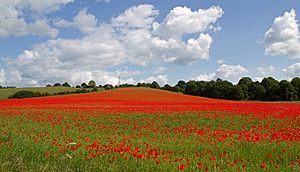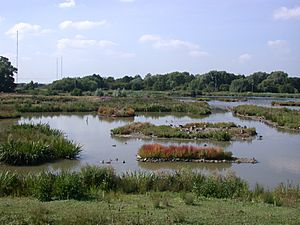Worcestershire Wildlife Trust facts for kids
Worcestershire Wildlife Trust is a special group that works to protect nature in Worcestershire, England. It's one of 46 similar groups across the United Kingdom. All these groups are part of a bigger team called The Wildlife Trusts partnership. This partnership is the UK's largest charity network focused on saving all kinds of plants, animals, and their homes.
The Worcestershire Wildlife Trust started in 1968. Its main goal is to look after, protect, and bring back wildlife in Worcestershire.

The Trust owns and looks after more than 70 special places called nature reserves all over Worcestershire. These reserves cover about 2000 acres (which is about 8 square kilometers). They are a big part of the Trust's dream for a "Living Landscape for Worcestershire." This means they want to make the whole county a great place for nature to thrive. The Trust has almost 20,000 members who support their work. More than 350 volunteers also help out, giving their time to care for these important natural areas.
Worcestershire's Nature Reserves
The Worcestershire Wildlife Trust manages many amazing nature reserves. These are safe places where wild plants and animals can live and grow. Here are some of the special places they look after:
- Brotheridge Green Nature Reserve
- Chaddesley Woods NNR
- Christopher Cadbury Wetland Reserve (also known as "Upton Warren")
- The Devil's Spittleful and Blackstone Farm Fields. This area includes the Devil's Spittleful and is next to the Wyre Forest District Council's Rifle Range Nature Reserve.
- Feckenham Wylde Moor
- Fosters Green Meadows NNR
- Grafton Wood
- Hollybed Farm Meadows
- Hunthouse Wood
- Knapp and Papermill
- Laight Rough
- Lower Smite Farm
- Monkwood
- Newbourne Wood
- Piper's Hill & Dodderhill Common (known locally as Hanbury Woods)
- Trench Wood
- Tiddesley Wood
- Wilden Marsh
More About the Trust
You can find out more about the Worcestershire Wildlife Trust and their work to protect nature in the county.
- Worcestershire Wildlife Trust Official Website: http://www.worcswildlifetrust.co.uk/


